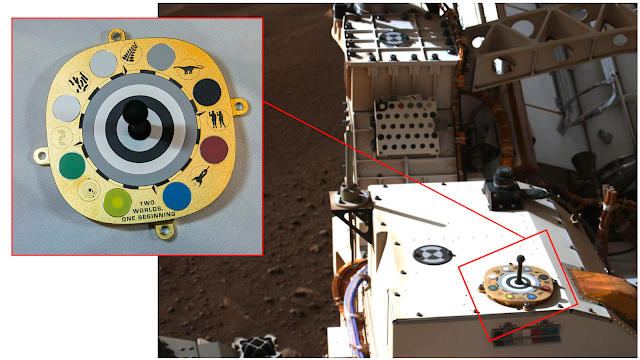_____________________________________
I've been writing Astronomical Returns for more than two years now, and I still have visions of grandeur that one day I'll go viral, just like The Everyday Astronaut on YouTube or @BocaChicaGal on Twitter. Of course, the secret to success on social media is good photography, and the secret to good photography is, you guessed it... good lighting! My sister certainly has this skill down, her insanely popular food and dog pages owe their following to the great lengths she goes through to get the best lighting for her pictures: waking up at the crack of dawn for the perfect sunrise shot, expensive flash stands for a subtle white glow, and hours and hours of photo editing
Now ever since Perseverance landed on Mars last month, we've all been treated to a barrage of breathtaking HD photos from the Red Planet. Just like on Earth, lighting on Mars varies greatly depending on the time of day, the season of the year, and the presence of dust or other atmospheric phenomenon. But unfortunately for Percy, or any other robotic photographer, the rover doesn't have the luxury of a human eye on-site, which means there's no way to adjust for the constantly changing lighting conditions. All the rover can do is point and shoot, and leave post-processing to the scientists receiving the data back on Earth. So how do we solve this problem?
 |
| First full-color image from Perseverance, taking February 19, 2021 |
The solution is to bring along a little calibration target, a physical color palette whose brightness and hue is pre-measured on Earth before launch. Then whenever Perseverance's two Mastcam-Z scientific cameras snap an image of the Red Planet, we can also tell it to take a picture of the calibration targets. By comparing the live image of the calibration target against the predetermined standards, the Perseverance camera team will know exactly how to edit the images to reflect the actual lighting conditions on Mars!
Perseverance carries two calibration targets in different positions on the rover so that at least one of them isn't blocked by shadow. The primary target is a funny looking contraption: just 4 inches wide and weighing only 118 grams, it consists of 4 concentric grayscale rings that are used primarily to determine proper exposure. Outside of those rings, there are 8 colored dots used to calibrate image coloring, and in the center there's a small post called a gnomon that functions like a sundial to intentionally cast a shadow on the calibration target. Finally, the calibration target has heavy duty samarium-cobalt magnets mounted underneath it to repel Martian dust that would cover it up and render it useless
 |
| "Two Worlds, One Beginning" - A closer look at the calibration target in an actual image from Mars |
 |
| As imaged by Apollo 17. The orange soil was the result of ancient volcanic processes when the Moon was still geologically active |
 |
| Raw photo on the left, as released by the Chinese space agency, vs approximate true color on the right |



No comments